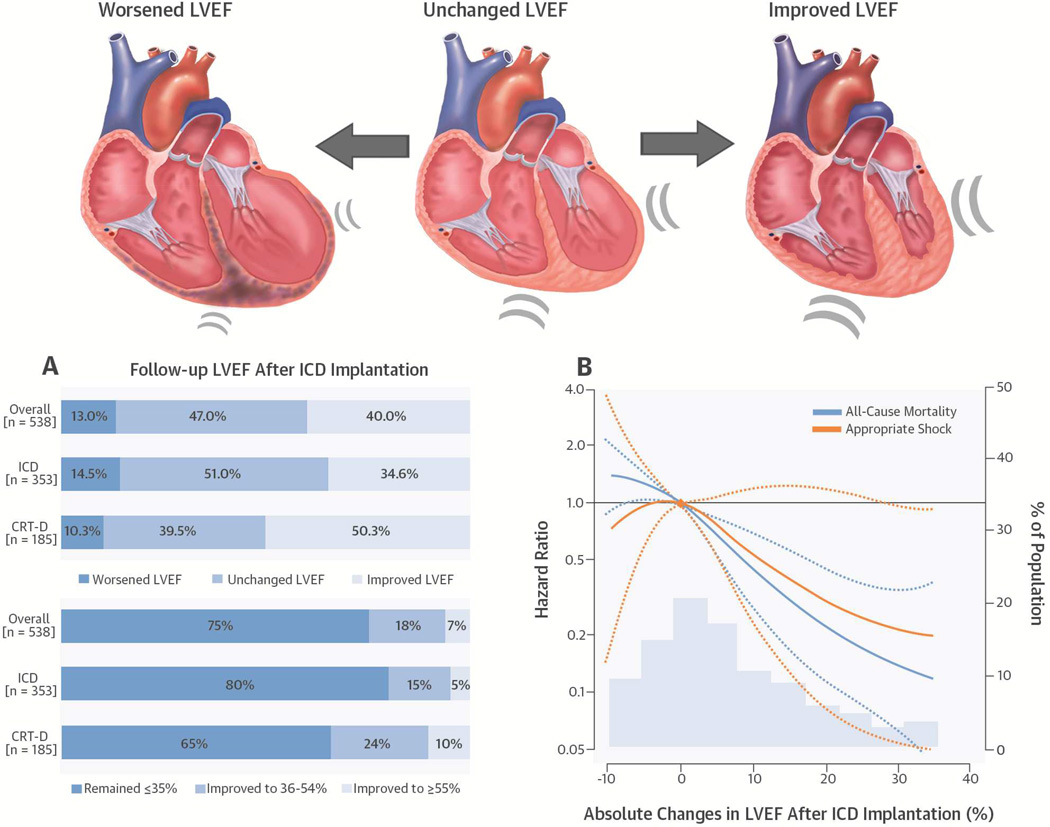CENTRAL ILLUSTRATION Follow-up LVEF after Primary Prevention ICD Implantation.
In this prospective cohort study of 538 patients with repeated left ventricular ejection fraction (LVEF) assessments after implantable cardioverter-defibrillators (ICD) had been inserted for primary prevention, (A) patients implanted with a cardiac resynchronization therapy device with defibrillator capacity (CRT-D) exhibited the greatest improvement both in terms of absolute increase in LVEF (upper panel) and the percentage improved to ≥35% (bottom panel). (B) Changes in LVEF were inversely associated with all-cause mortality and appropriate shock for ventricular tachyarrhythmia. The curves represent adjusted hazard ratios and their 95% confidence intervals (dashed lines) based on restricted quadratic splines for absolute change in LVEF with knots at the 5th, 50th, and 95th percentiles of its distribution. The reference values (diamond dots) were set at 0% change in LVEF. Results were obtained from Cox regression models adjusted for age, sex, race, baseline LVEF, smoking status, body mass index, New York Heart Association class, ischemic cardiomyopathy, atrial fibrillation, diabetes, hypertension, chronic kidney disease, device type, and stratified by enrollment center. Histograms represent the frequency distributions of the absolute change in LVEF. Abbreviations: Worsened LVEF = absolute decrease in LVEF >5%; unchanged LVEF = absolute change in LVEF −5 to 5%; improved LVEF = absolute increase in LVEF >5%.

